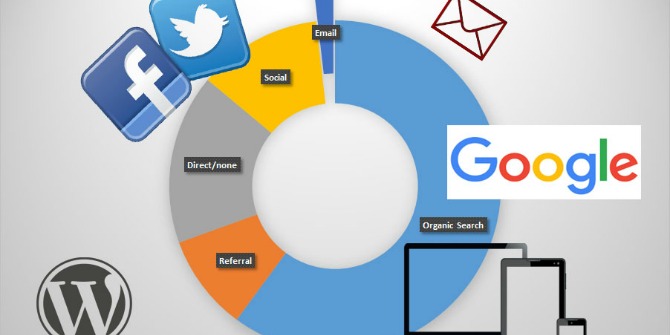 Most journals have not yet published papers submitted to them last November while in the meantime, NASA have managed to send a rocket to Mars and beam back images. Michael Eisen writes that academics must harness their own power to reshape how we communicate.
Most journals have not yet published papers submitted to them last November while in the meantime, NASA have managed to send a rocket to Mars and beam back images. Michael Eisen writes that academics must harness their own power to reshape how we communicate.
I was excited this week when my Twitter stream started lighting up with links to an article titled “The Glacial Pace of Scientific Publishing: Why It Hurts Everyone and What We Can Do To Fix It“. Sounded right up my alley. I was even more excited when I clicked and saw that it was written by Leslie Vosshall, a colleague who not only does amazing work, but has always been extremely thoughtful when I’ve talked to her about things like scientific publishing.
Her diagnosis of the problem is spot on:
Why is it that in these days of instant information dissemination via blogs, Twitter, Facebook, and other social media sites, our scientific publishing system has ground to a medieval, depressing, counterproductive near-halt?
I could not agree more. Consider that most papers submitted to journals last November 26th have still not been published. That’s not a random date – it happens to be the day NASA launched an Atlas rocket carrying the Mars Scientific Laboratory from Cape Canaveral.
While, on Earth, scientific papers were languishing in editorial purgatory and peer review, bouncing back and forth while authors attempted to cater to some reviewer’s whim, maybe went to another journal, and then sat around in production for months while the awaited online publication, an SUV-sized robot made its way to another planet, landed with pinpoint accuracy on the surface and started beaming back pictures. NASA 1. Publishing 0.
Leslie starts her proposal for how to fix the problem with a crucial observation:
Scientific publishing is an enterprise handled by scientists for scientists, which can be fixed by scientists.
Again, spot on. Far too often scientists treat the myriad problems in scientific publishing as if they are some kind of externally applied force within which we are doomed to eternally labor in some kind of Sisyphian punishment ritual, when in reality, the system is precisely what WE make it.
Having eloquently dissected the problem, and recognized that fixing it is well within our power, I dared to hope that Leslie would come to the same conclusion that I have – that the whole way we go about publishing papers is crazy and needs to be reinvented from the ground up.
Instead she takes the “mend it, don’t end it” approach, proposing a series of fixes – or really a set of guiding aphorisms for authors (calibrate and accept rejection), editors (triage judiciously, seek advice and be decisive) and reviewers (advise honestly and promptly).
The piece is thoughtful and constructive. Everything she says is spot on, and if people listened the process of scientific publishing would be more productive, less unpleasant, and even a bit faster. But it still would not be fast.
Would it be better if things we published in 3 months instead of 6, 9 or 12? Sure. Would it be better if authors didn’t have to run the gauntlet of reviewer “suggestions” and navigate the whim of a capricious editor to get their work published? Sure. But does a 3 month publishing process, no matter how congenial, really measure up in an era of instant communication? If you believe as Leslie clearly does, and I do, that delays in publication are bad for science, then you should strive not to minimize them, but to eliminate them.
In a world in which technology makes it possible to share information instantly, there is no need to brook ANY delay in publication. When I have a piece of work from my lab that I am ready to share with my colleagues, I should be able to share it. Immediately. To paraphrase Clay Shirky: Publishing is not a process. Publishing is a button.
The major obstacle to achieving this goal is not efficiency of pre-publication peer review, but that we do it at all. I am not proposing that we do away with peer assessment and editorial selection. Just that the order of events be reversed – moving from the current “assess then publish” to “publish then assess”. I’ve written before about how I think this could work (see Peer review is f***ed up – let’s fix it), and I won’t repeat those details here. And there are plenty of other people out there with great ideas about how we can retain most of the benefits of peer review while ceasing to use it as a publishing screen. Any of them would be immeasurably better than the system we have now – even with Leslie’s reforms in place. We just have to harness the power scientists have to reshape the way we communicate our science and make it work.
And then we can dare to dream that the time it takes to publish a paper would not just be less than the nine months it takes for a rocket to get to Mars, but less than 14 minutes it takes for photos to make their way back to Earth.
Note: This article gives the views of the author(s), and not the position of the Impact of Social Sciences blog, nor of the London School of Economics.
This blog was originally published on Michael Eisen’s blog, ‘It is NOT junk’, and is published here with permission.
About the author:
Michael Eisen is an evolutionary biologist at UC Berkeley and an Investigator of the Howard Hughes Medical Institute. His research focuses on the evolution and population genomics of gene regulation in flies, and on the ways that microbes control animal behavior. Eisen is a strong proponent of open science, and a co-founder of the Public Library of Science.







In economics the publication process is very slow but the norm is to post all papers onto the web as working papers. So in one sense it is instantaneous. Unlike biology where they follow the “Ingelfinger Rule” which was just intended to increase the NEJM’s market power…